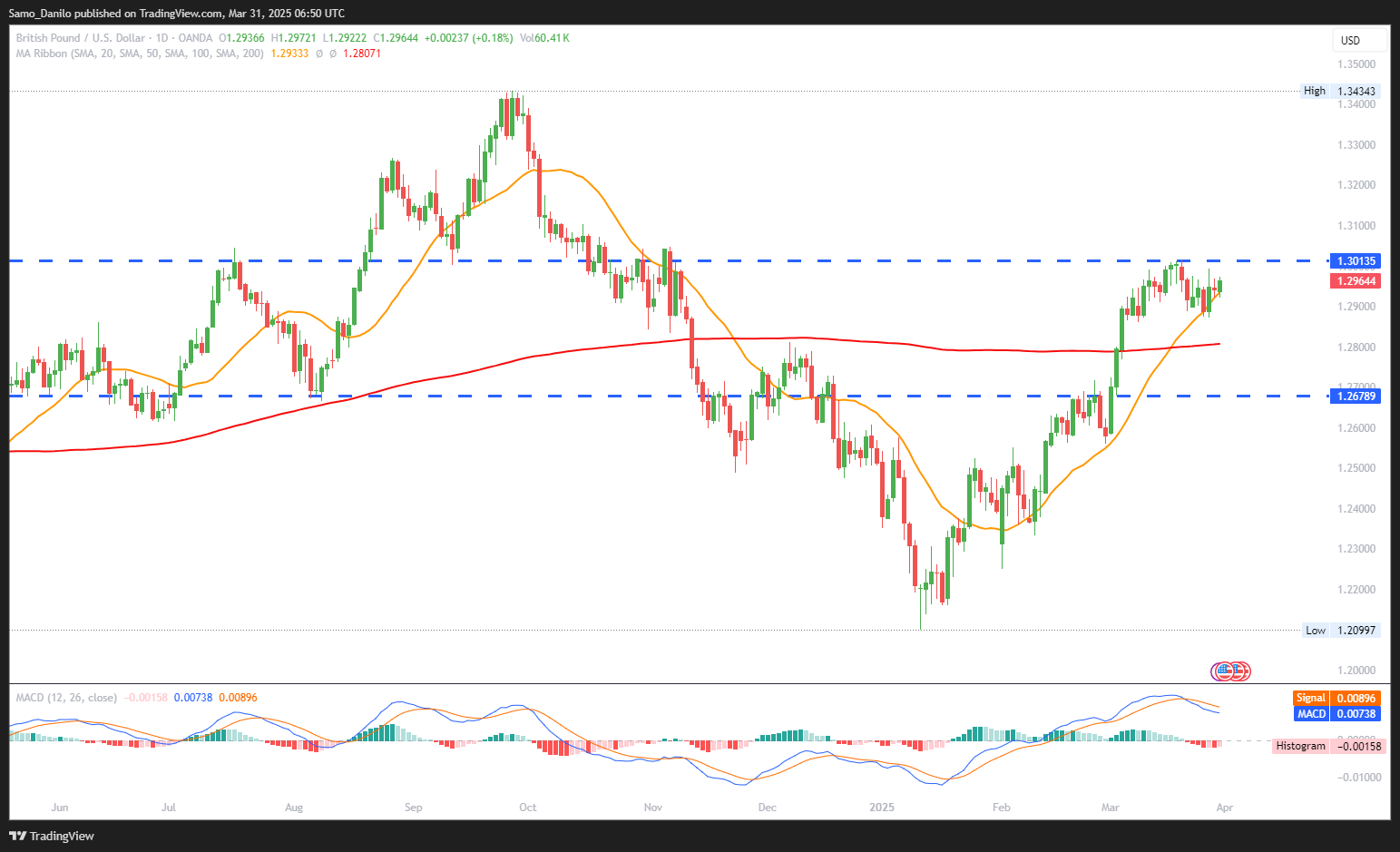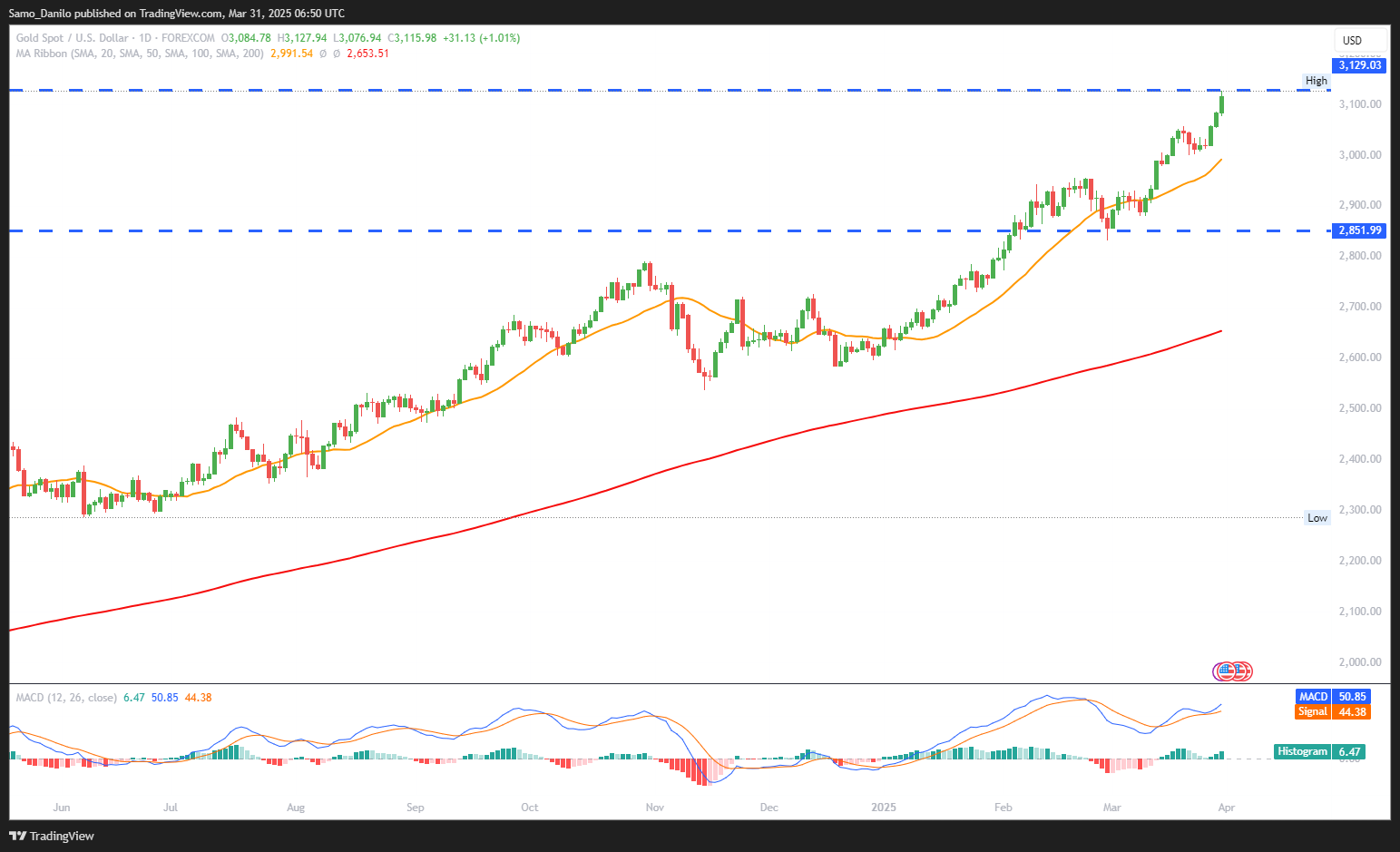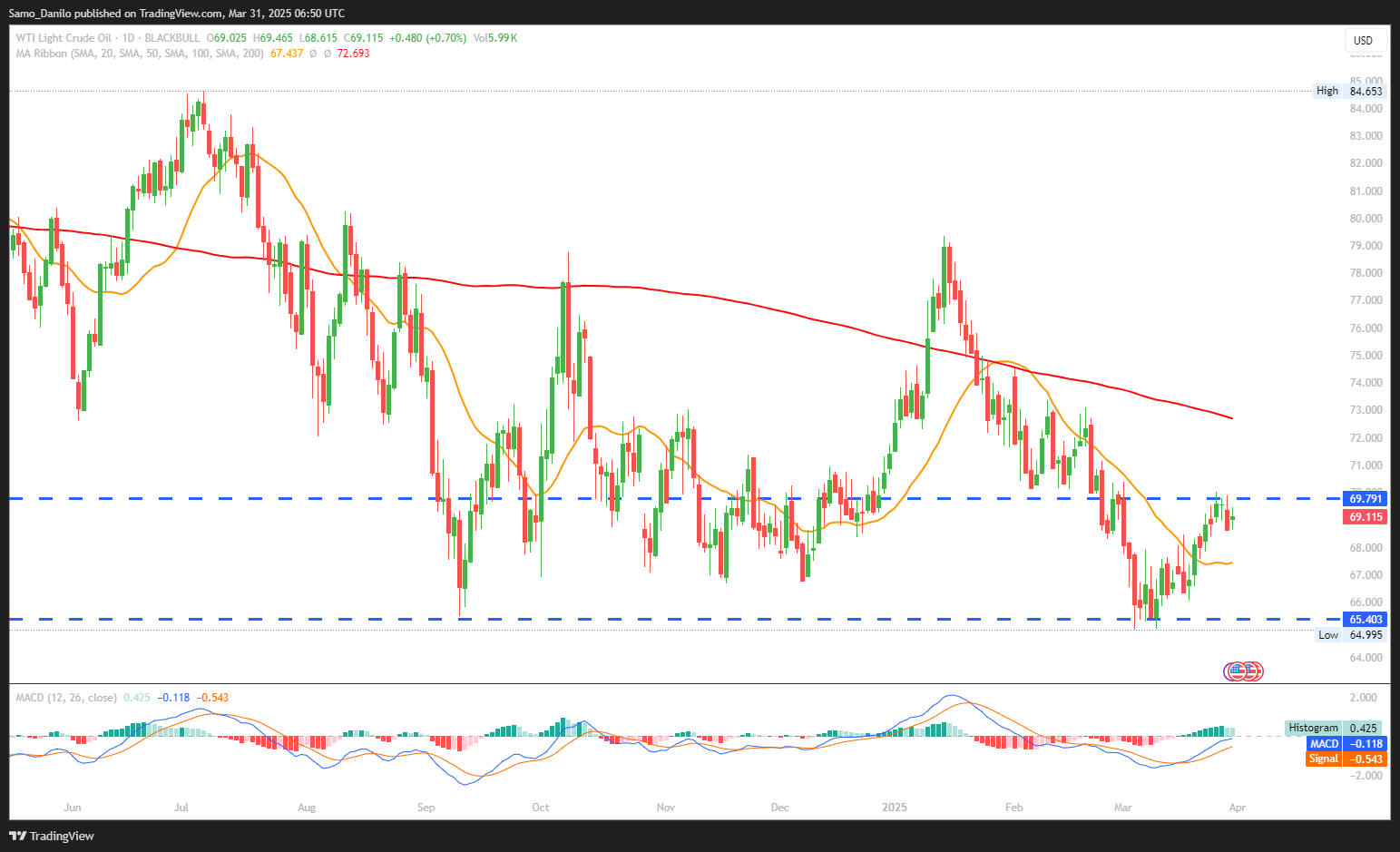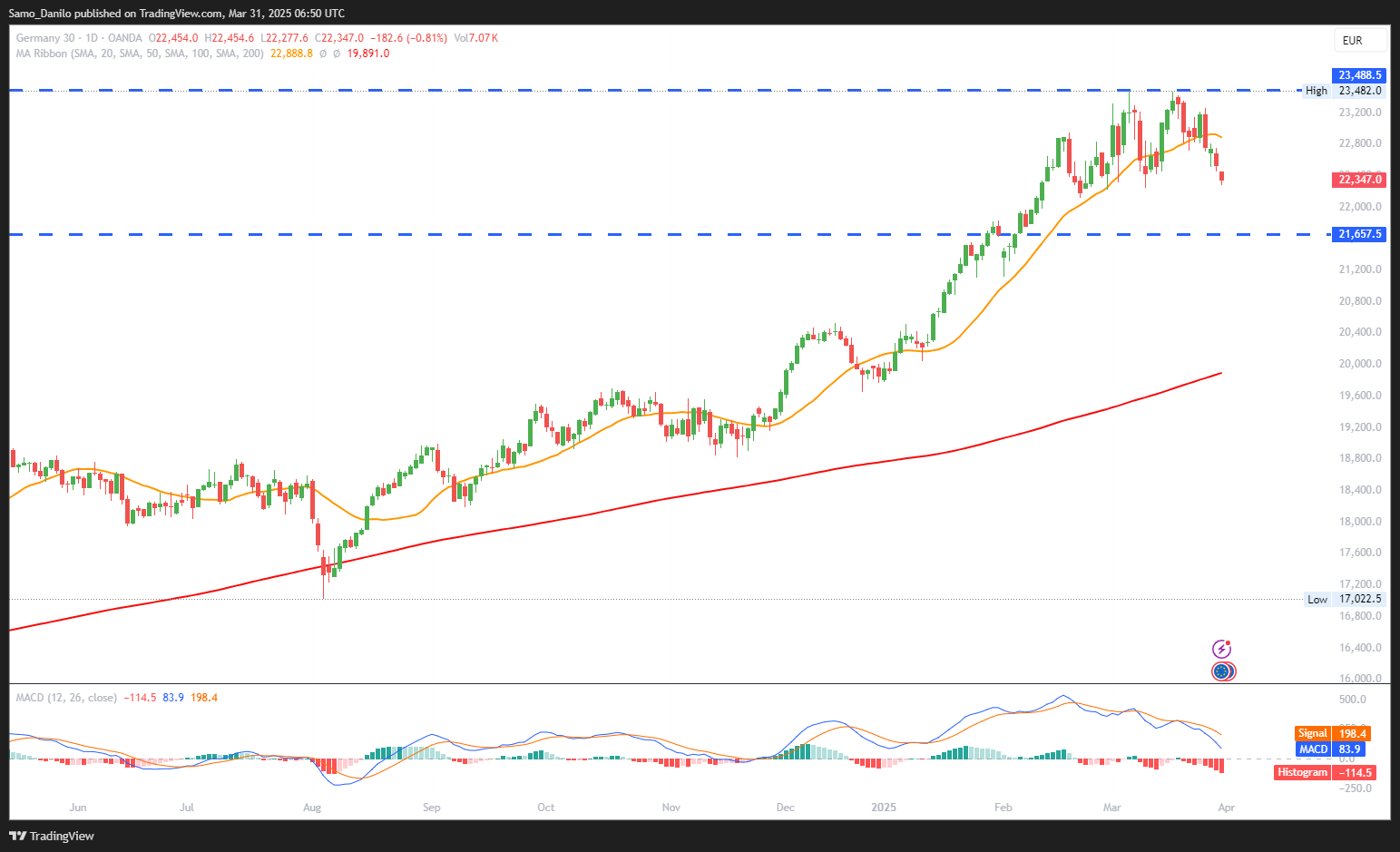EURUSD
- EUR/USD Price: EUR/USD trades with a slight positive bias early Monday in Europe, supported by a broadly weaker US Dollar but struggling to break above 1.0840.
- USD Bulls: The US Dollar remains under pressure despite signs of rising inflation, which could delay the Federal Reserve’s rate-cut cycle beyond June.
- EU Concessions: The European Commission (EC) signaled it has prepared trade concessions to avoid retaliatory tariffs from President Trump, which are set to be announced Wednesday.
- US Economic Signals: The University of Michigan survey revealed that 12-month inflation expectations surged to their highest in 2.5 years, overshadowing consumer spending growth of 0.4% in February, which followed a downwardly revised 0.3% drop in January.
- German Inflation Data: Traders now await preliminary German consumer inflation data, which could provide fresh direction for the pair. The broader fundamental backdrop still leans in favor of further appreciation for the EUR/USD.
Closing statement: While EUR/USD remains supported by a weaker USD and positive European trade developments, upcoming German inflation data and US trade policy announcements will be key catalysts for further moves.
GBPUSD
- GBP/USD Price: The GBP/USD pair maintains its position around 1.2950 in early European trading on Monday, supported by a weaker US Dollar.
- US Tariffs: Fears that President Trump’s tariffs will fuel inflation and slow economic growth continue to pressure the USD, providing tailwinds for GBP/USD.
- US Inflation Data: The US Personal Consumption Expenditure (PCE) Price Index showed a 0.4% monthly rise in core inflation for February, marking its largest increase since January 2024 and pushing the yearly rate to 2.8%.
- GS Rate View: Goldman Sachs now expects the Federal Reserve to deliver three rate cuts in 2024, an increase from its previous forecast of two cuts.
- UK Retail Sales: The UK Retail Sales report showed a 1.0% MoM increase in February, slightly below January’s revised 1.4% gain but still strong, supporting the Pound Sterling (GBP).
Closing statement: With a weaker USD, hawkish Fed expectations softening, and strong UK retail data, GBP/USD maintains a bullish outlook, though upcoming US economic releases will be key for further momentum.
XAUUSD
- XAU/USD Price: Gold (XAU/USD) gains for the third consecutive session as rising trade tensions drive safe-haven demand. However, overbought conditions on the daily chart suggest caution for bullish traders.
- PCE Inflation Data: The US Personal Consumption Expenditures (PCE) Price Index, the Fed’s preferred inflation gauge, increased 0.3% MoM and 2.5% YoY in February, in line with market expectations.
- Trump’s Rhetoric: On Sunday, President Trump expressed frustration with Russian President Vladimir Putin, warning of massive tariffs on Russian oil and potential bombings in Iran, heightening geopolitical risks.
- China’s PMI Data: China’s official PMI data for March showed a modest improvement, with Manufacturing PMI at 50.5 and Non-Manufacturing PMI at 50.8, but had little effect on gold prices.
- US Economic Data: Focus shifts to this week’s major US macroeconomic releases, particularly Friday’s Nonfarm Payrolls (NFP) report, which could shape market expectations for the Fed’s rate trajectory.
Closing statement: Gold remains bullish amid risk aversion, but overbought technicals and upcoming US data could trigger profit-taking or volatility in the near term.
CRUDE OIL
- Crude Oil Price: WTI crude oil prices pull back after touching the mid-$69 range in Asian trading. However, the downward movement lacks strong bearish conviction, signaling market indecision.
- Trump’s Warning: President Trump issued a stern warning to Ukrainian President Volodymyr Zelenskiy, cautioning that withdrawing from a critical rare earth minerals deal would bring serious consequences.
- Potential Secondary Tariffs: Trump signaled that he may introduce secondary sanctions on buyers of Russian oil, depending on Moscow’s stance on ending the war in Ukraine, adding geopolitical uncertainty to the market.
- New Major Oilfield: China National Offshore Oil Corporation (CNOOC) announced a significant oilfield discovery in the eastern South China Sea, potentially boosting future supply capacity.
- Tariff Uncertainty: If no further delays occur, US refineries could face a 10% tariff on Canadian crude imports and a 25% tariff on Mexican crude. However, the market appears skeptical that these duties will be fully implemented.
Closing statement: Crude oil remains range-bound, with geopolitical risks and tariff uncertainty keeping traders cautious. Potential supply disruptions and US policy decisions will shape the market's next move.
DAX
- DAX Price: The DAX dropped 0.96% on Friday, March 28, marking its third consecutive decline. US tariff uncertainty weighed on German exporters, with potential reciprocal tariffs from April 2 adding to the pressure.
- Germany’s Labor Market: The German unemployment rate unexpectedly rose from 6.2% in February to 6.3% in March, signaling economic fragility beyond the tariff risks.
- Retail Sales: Retail Sales in Germany increased by 0.8% MoM in February, following a 0.2% rise in January, suggesting modest consumer spending growth despite broader economic concerns.
- Inflation Data: With Friday’s economic data in mind, investors now look to Germany’s March inflation report. Economists expect inflation to hold steady at 2.3%, which could influence ECB rate expectations.
- US Data: On Monday, March 31, attention shifts to Chicago PMI and Dallas Fed Manufacturing PMI. Weaker prints could revive recession fears, while stronger readings may reinforce a hawkish Fed outlook, impacting global markets, including the DAX.
Closing statement: DAX remains pressured by trade risks and economic uncertainty, with upcoming inflation and US economic data likely to dictate its near-term direction.




